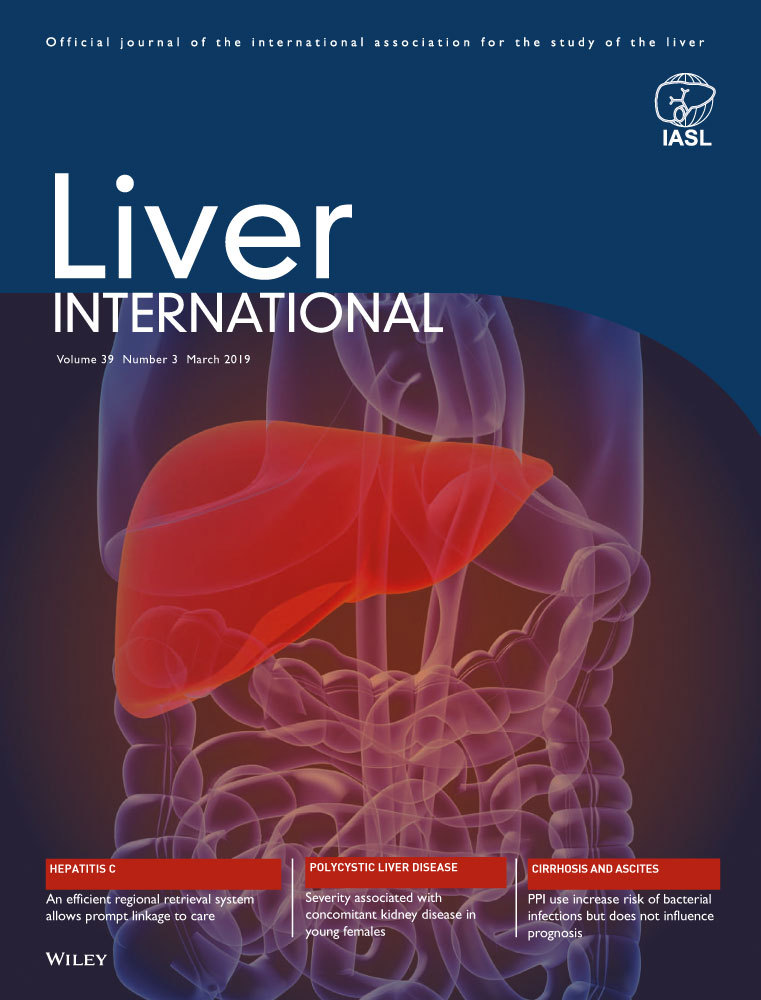Genetic determinants of steatosis and fibrosis progression in paediatric non-alcoholic fatty liver disease
Funding information
This work was supported by the German Federal Ministry of Education and Research (BMBF, Liver Systems Medicine—LiSyM, FKZ 031L0057, 031L0058).
Handling Editor: Frank Tacke
Abstract
Background and Aims
Non-alcoholic fatty liver disease (NAFLD) is the most common chronic liver disease in children and adolescents today. In comparison with adult disease, paediatric NAFLD may show a periportal localization, which is associated with advanced fibrosis. This study aimed to assess the role of genetic risk variants for histological disease pattern and severity in childhood NAFLD.
Methods
We studied 14 single nucleotide polymorphisms (SNP) in a cohort of 70 adolescents with biopsy-proven NAFLD. Genotype was compared to an adult control cohort (n = 200) and analysed in relation to histological disease severity and liver tissue proteomics.
Results
Three of the 14 SNPs were significantly associated with paediatric NAFLD after FDR adjustment, rs738409 (PNPLA3, P = 2.80 × 10−06), rs1044498 (ENPP1, P = 0.0091) and rs780094 (GCKR, P = 0.0281). The severity of steatosis was critically associated with rs738409 (OR=3.25; 95% CI: 1.72-6.52, FDR-adjusted P = 0.0070). The strongest variants associated with severity of fibrosis were rs1260326, rs780094 (both GCKR) and rs659366 (UCP2). PNPLA3 was associated with a portal pattern of steatosis, inflammation and fibrosis. Proteome profiling revealed decreasing levels of GCKR protein with increasing carriage of the rs1260326/rs780094 minor alleles and downregulation of the retinol pathway in rs738409 G/G carriers. Computational metabolic modelling highlighted functional relevance of PNPLA3, GCKR and UCP2 for NAFLD development.
Conclusions
This study provides evidence for the role of PNPLA3 as a determinant of portal NAFLD localization and severity of portal fibrosis in children and adolescents, the risk variant being associated with an impaired hepatic retinol metabolism.
CONFLICT OF INTEREST
All authors declare no competing interests and have approved the final article.




